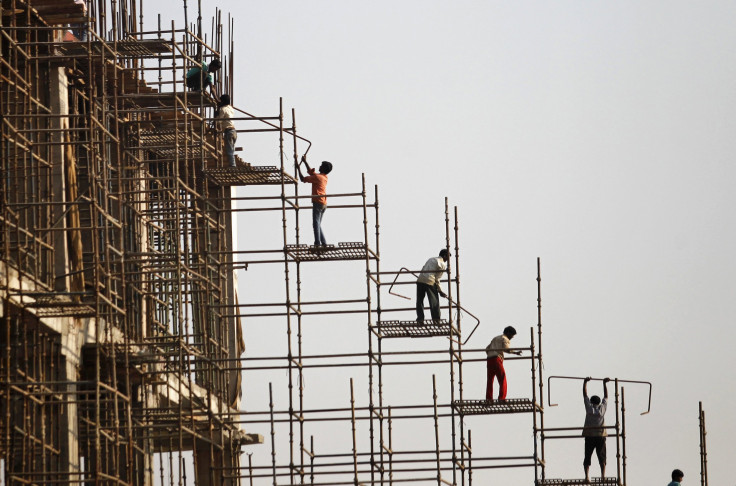India Economic Survey: Country Projected To Grow At Over Eight Percent This Year

NEW DELHI -- India could be one of the world’s fastest growing big economies in 2015-16, according to predictions outlined in the government’s annual economic survey released Friday. The survey, which comes a day ahead of the country’s annual federal budget, says that the Indian economy is poised for double-digit growth in the near future.
The survey has pegged India’s Gross Domestic Product (GDP) growth at between 8.1-8.5 percent in 2015-16, as against 7.4 percent in 2014-15, even though it said that the buoyancy of Indian exports has actually fallen. Painting an optimistic picture for India’s future economic growth, the survey predicts that the federal government will succeed in restricting its fiscal deficit to 4.1 percent.
“From the macroeconomic perspective, the worst is clearly behind us,” the survey says. Prepared under India’s Oxford-trained chief economic advisor Arvind Subramanian, the survey states that brighter prospects in India “owe mainly to the fact that the economy stands largely relieved of the vulnerabilities associated with an economic slowdown, persistent inflation, elevated fiscal deficit, slackening domestic demand, external account imbalances, and oscillating value of the rupee in 2011-12 and 2012-13.”
The growth projections in the survey are based on the assumption that global oil prices will remain at the present low levels. India is energy deficient and imports a bulk of its energy requirements.
The survey says that the outlook for India’s external sector is “perhaps the most favorable since the 2008 global financial crisis and much better than 2012-13, when elevated oil and gold imports fuelled a surge in the current account deficit.” In 2013-14, India’s trade deficit declined to $135.8 billion from a high of $190.3 billion the previous year owing to a decline in the growth of imports, even though growth in Indian exports remained sluggish at 4.7 percent.
In 2014-15, India’s services sector grew by a little over 10 percent, and contributed nearly three-fourths to the overall growth figure. In fact, the survey noted that in 2013, the Indian services sector registered the fastest growth, next only to China. The survey especially highlighted what it said was “hyper-growth” in the Indian technology startup space. The Indian IT sector as a whole employs about 3.5 million people and clocks annual revenues to the tune of $119 billion, out of which $100 billion is earned through exports.
Jaijit Bhattacharya, partner, Infrastructure & Government services at KPMG, said, in an emailed statement, that while he welcomed the fact that the survey has targeted the elimination of revenue deficit and has laid out a “fiscal discipline wherein borrowings will be done for only capital investments,” a muted export growth projection would be an “area of concern” unless India becomes more competitive.”
“The survey indicates that the government is bearing a very large subsidy bill, with the food subsidy bill being one of the largest. It would be imperative to taper off the subsidies over a period of time to support deeper structural reforms. The social pressures for supporting the underprivileged while balancing the short term imperative of boosting public investment and not upsetting the fiscal discipline continues to be a challenge,” Bhattacharya said, in his statement.
© Copyright IBTimes 2024. All rights reserved.





















